There are so many aspects of food photography that I love, (and eating is not on the top of that list…surprise, surprise)
Aside from editing and post-production, composition techniques is by far a favourite part of the process for me. I am a total nerd, I love the theory side and the reasons why some things look better than others.
I find it so fascinating.
To say that there are MANY composition techniques that we have available to us is an understatement.
When putting together a comprehensive list for my composition techniques course: Composition Essentials, it made me realise all the composition techniques that are available to us and how we normally use quite a few in one image.
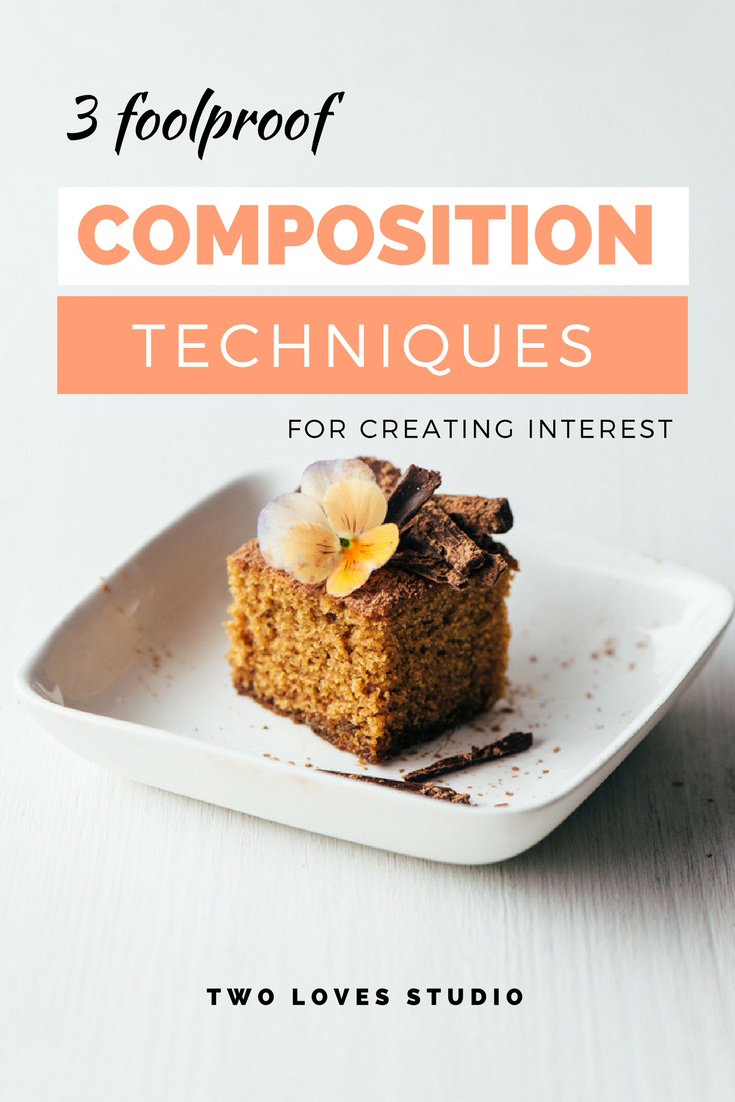
Why Are Composition Techniques Important?
Why do we create interest in our food photography?
Well, creating interest in our work is one way of allowing the viewer to connect with our story. Our food story is so important to us, it’s why we do what we do, it’s what keeps us motivated to practice food photography hours and hours on end.
We, therefore, want to make sure that the viewer is getting all the emotion they need from our images. That their eyes are travelling around the frame as we intended, connecting with the food and our message.
But I think the hardest part about composition techniques is knowing which tools to use? There are so many.
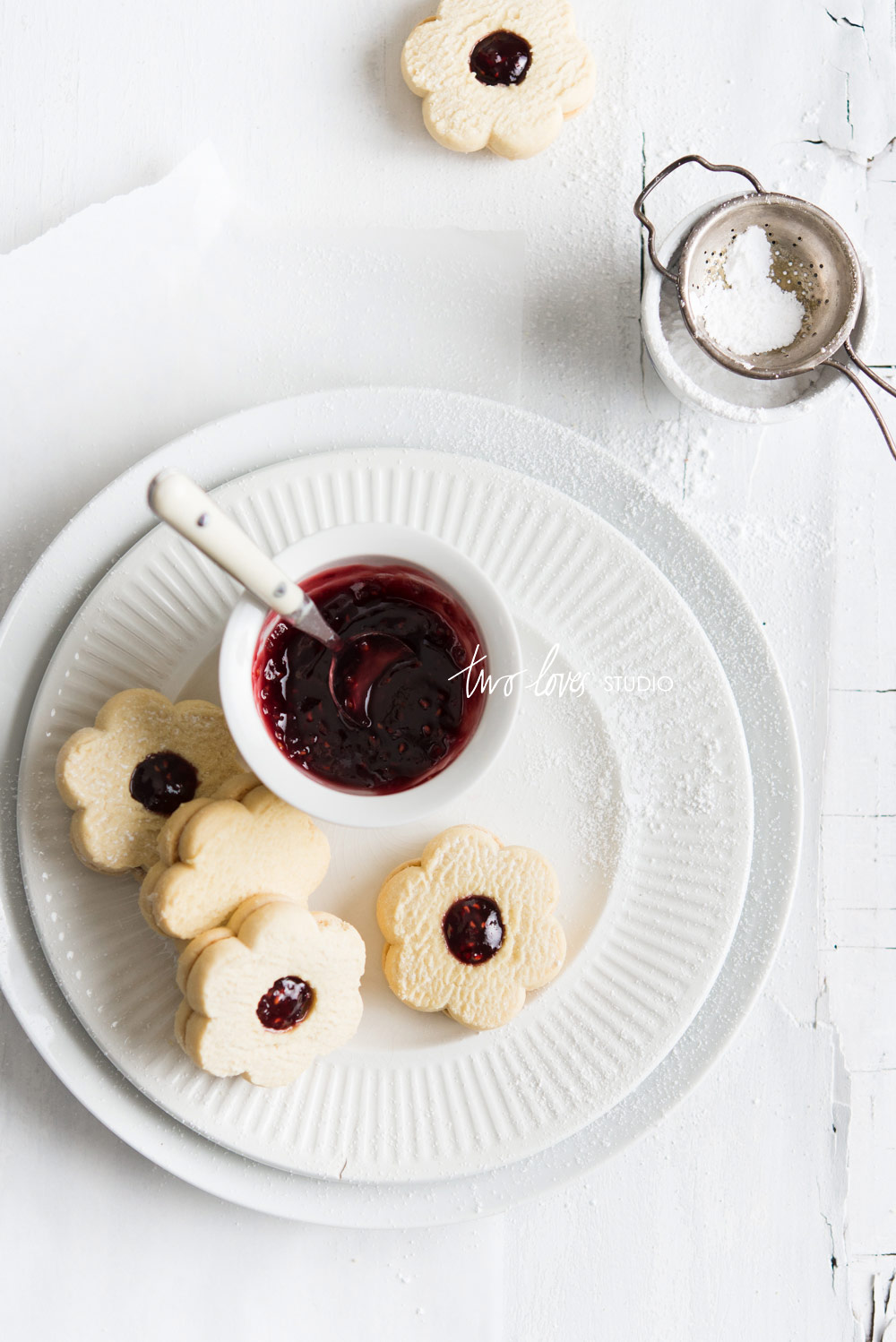
I know when I first started to study composition techniques, there were so many tools I was excited to try them all. Practising and finding what worked for my style, I began to see that composition isn’t an isolated subject.
Usually, a few composition techniques will work to not only complement each other but reinforce the power and interest in the frame.
After composing images for more than 5 years, it’s safe to say, I’ve learned a lot about what works and what doesn’t.
I now have a bag full of ‘go-to’ tools and rules that I now use to get my signature look, (including minimalistic styling, which actually requires just as much compositional fore-thought as a more complex food story).
What I love about composition the most is how you interpret the principles, tools and rules to be unique to your style.
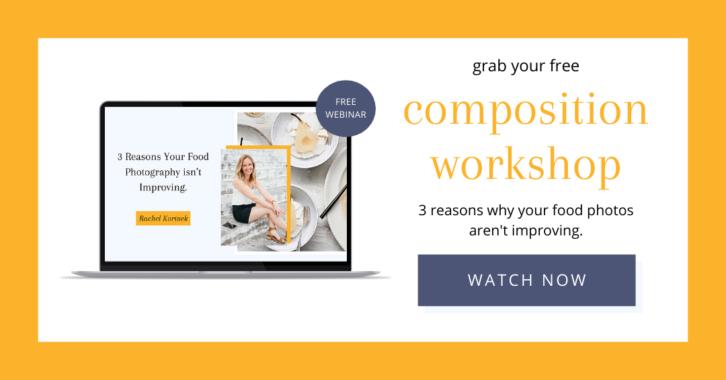
3 Foolproof Composition Techniques For Creating Interest
As there are so many compositional techniques or rules to use, knowing when to use which tool can feel overwhelming.
However, there a few that you can use in almost any situation that kick your work up a notch.
These three tools are something that I always think about how I can corporate into my styling. Let’s take a look at what they are and how I use them.
Layering: The Most Important Composition Technique in Food Photography
Now, you may have read that and thought – wow, that’s a bold statement! But I seriously think it is true.
‘There’s no such thing as an ugly dish, just inappropriate layering’.
Yes, even brown foods!
If your dish looks a little ugly, the chances are you need to focus on getting your layers right.
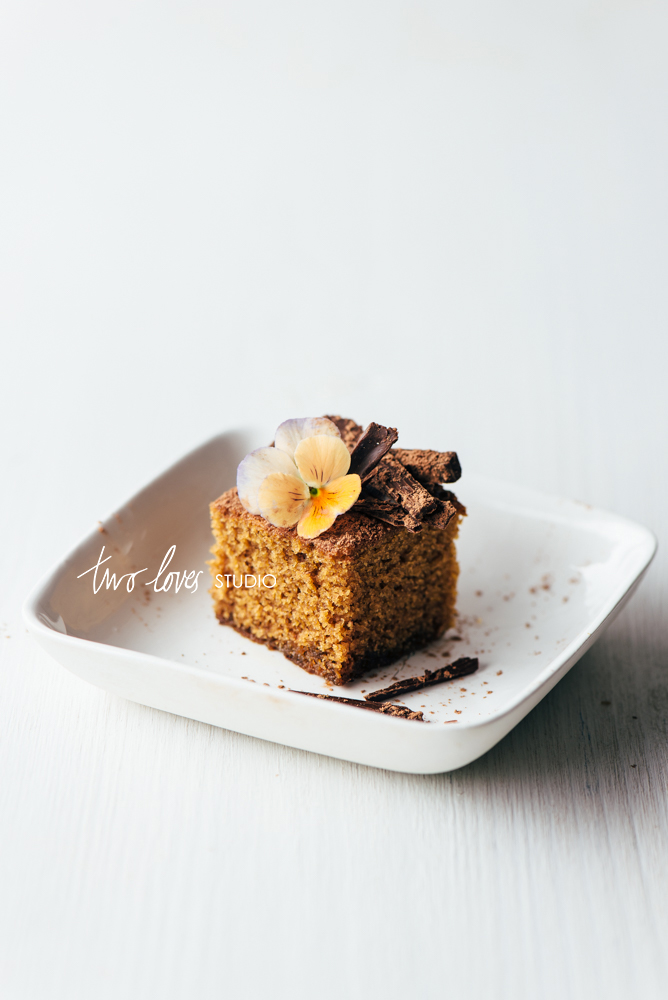
So what is layering anyway?
A layer is simply, ‘the number of elements that you have on your set on top of one another’.
As a rule of thumb, use at least three layers to give your images quality characteristics.
For example, napkin, dish, garnish would be three layers and would appear on top of one another.
Don’t count the food/recipe as a layer as it’s the subject. You’re aiming for three layers excluding the food itself.
Tips for making the most out of your layers.
- Layers should always make sense. Don’t put garnishes on your dish that you wouldn’t put in your mouth. It you wouldn’t eat it, don’t use it.
- Layers can be subtle and minimal.
- Layers can (and should) be used to hide blemishes in the dish.
- Layers should add to the story you are telling and evoke emotion, rather than be a distraction.
TIP: Layering food and props together will instantly take your work from zero to hero. It’s what I do all the time. Not working? Can I add another or more powerful layer around my dish.
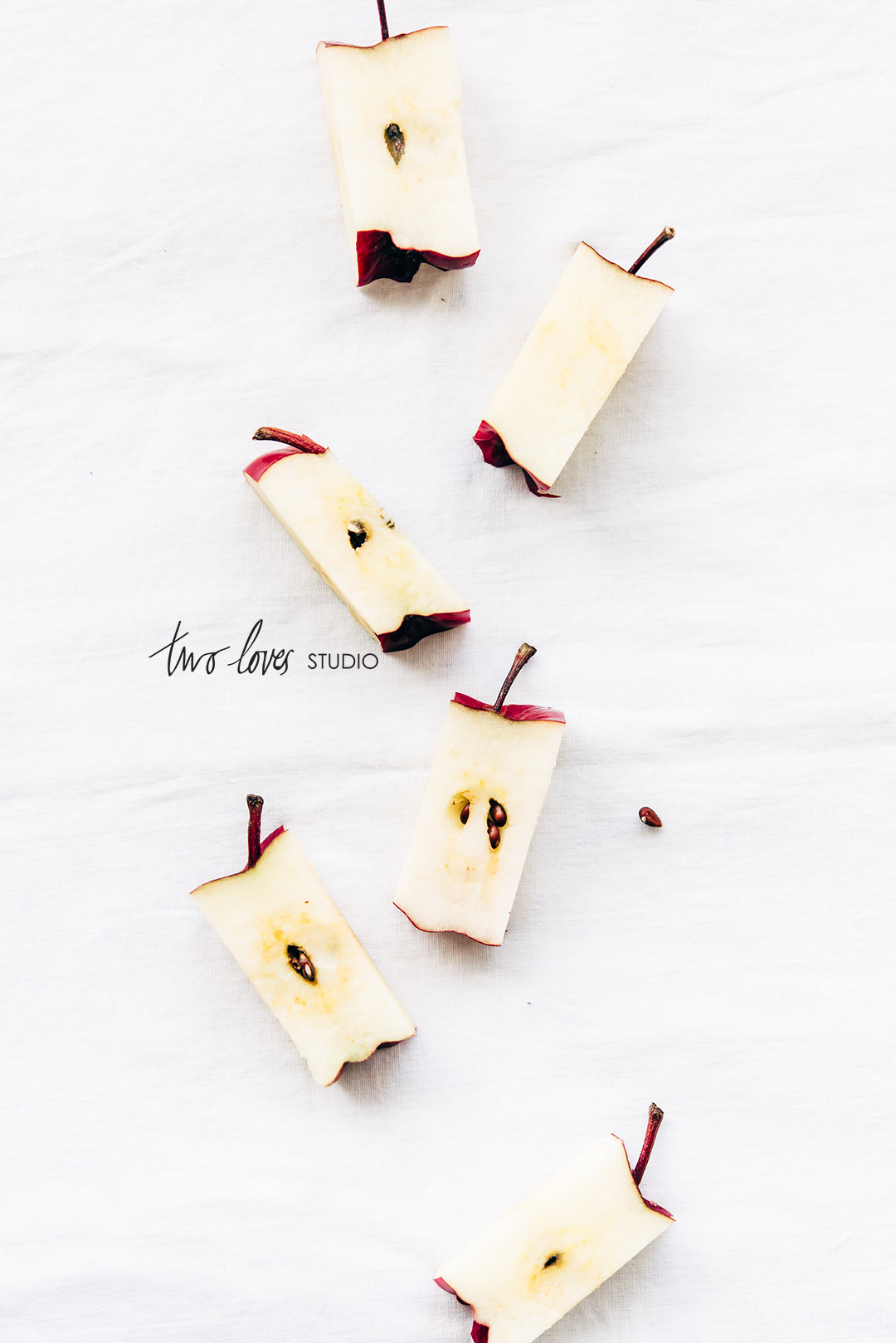
Repetition: A Strong Composition Technique For Emotion
Repetition is all about repeating a core aspect or subject in your image. This helps to create a pattern which takes on a life of its own.
Think about it, when you repeat something, it becomes larger and more interesting. Patterns are a really strong composition technique in food photography and the good news is that it is super simple to incorporate into your styling.
This types of composition technique can work really well when you have many food subjects that you have to style and it feels overwhelming.
Don’t worry if the food you are shooting doesn’t seem to have any obvious patterns, the key here is to create patterns with the subject itself.
This is where the power lies, as you get full control over the look, which is important in making sure your composition techniques match your unique style.
TIP: Emphasise patterns and repetition by using a tight crop, so the emphasis is on this visual element.
I always think, if I am stuck for what composition technique to go with, default to repetition to get those styling juices flowing. You’ll be amazed at what this opens up for you.
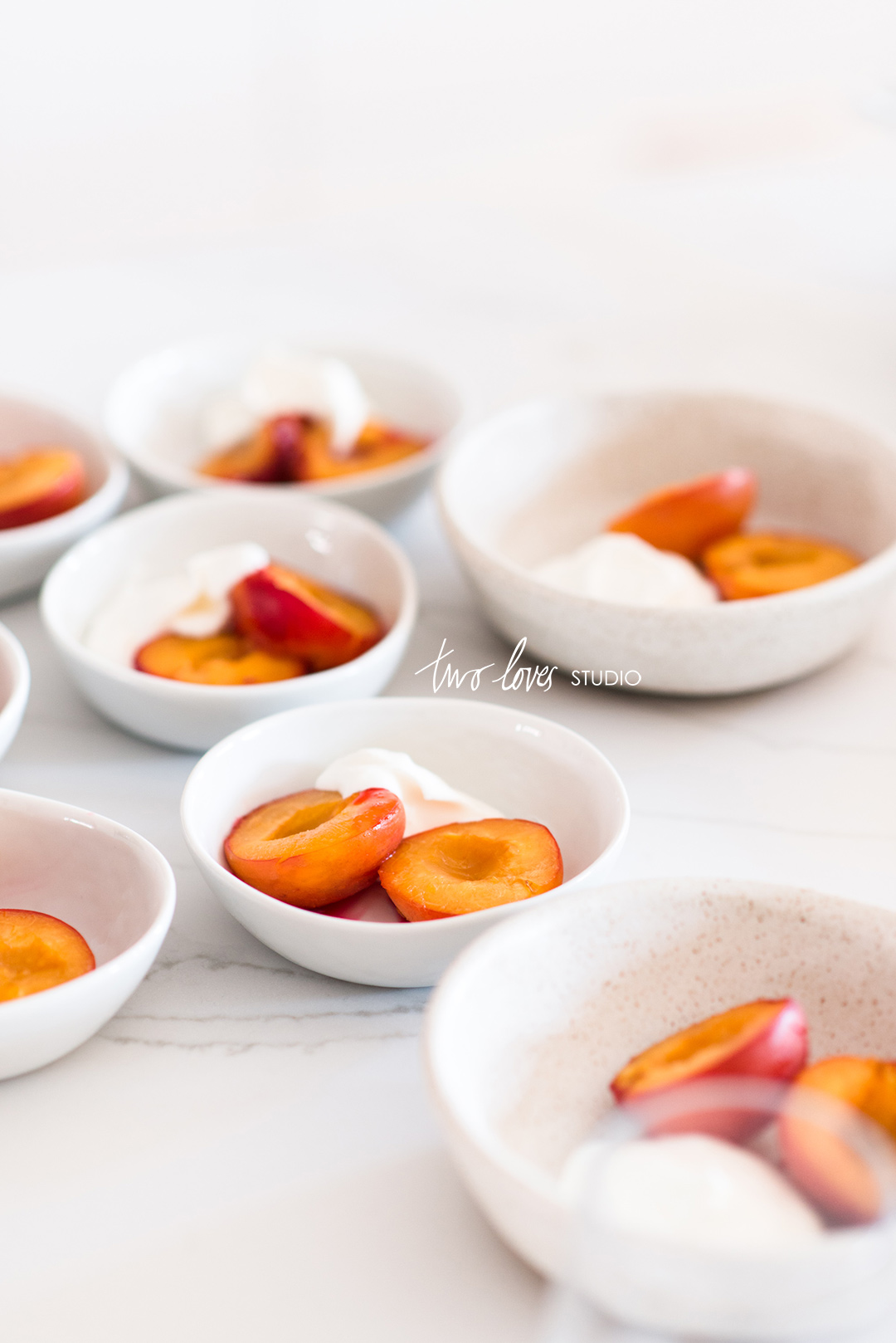
Triangles: An Advanced Technique To Create Dynamic Tension
A little fun fact for you, my favourite number is three. So it’s safe to say that I am drawn to a triangle because it’s created by three lines.
The symbolism of a triangle dates back centuries where it was associated with strength, stability and divinity.
Incorporating triangles into your images is a powerful way to unite your subjects together and create movement around the important elements in the frame.
The trick to using triangles is more about allowing the viewer to make the connection between main subjects with their eyes.
I tend to like to use odd numbers of subjects, so using the triangle method to place these subjects allows me to quickly create a flowing and dynamic image.
Dynamic, btw, when it comes to composition techniques is about creating energy and movement. Just so we’re on the same page.
Jargon can be really unhelpful sometimes.
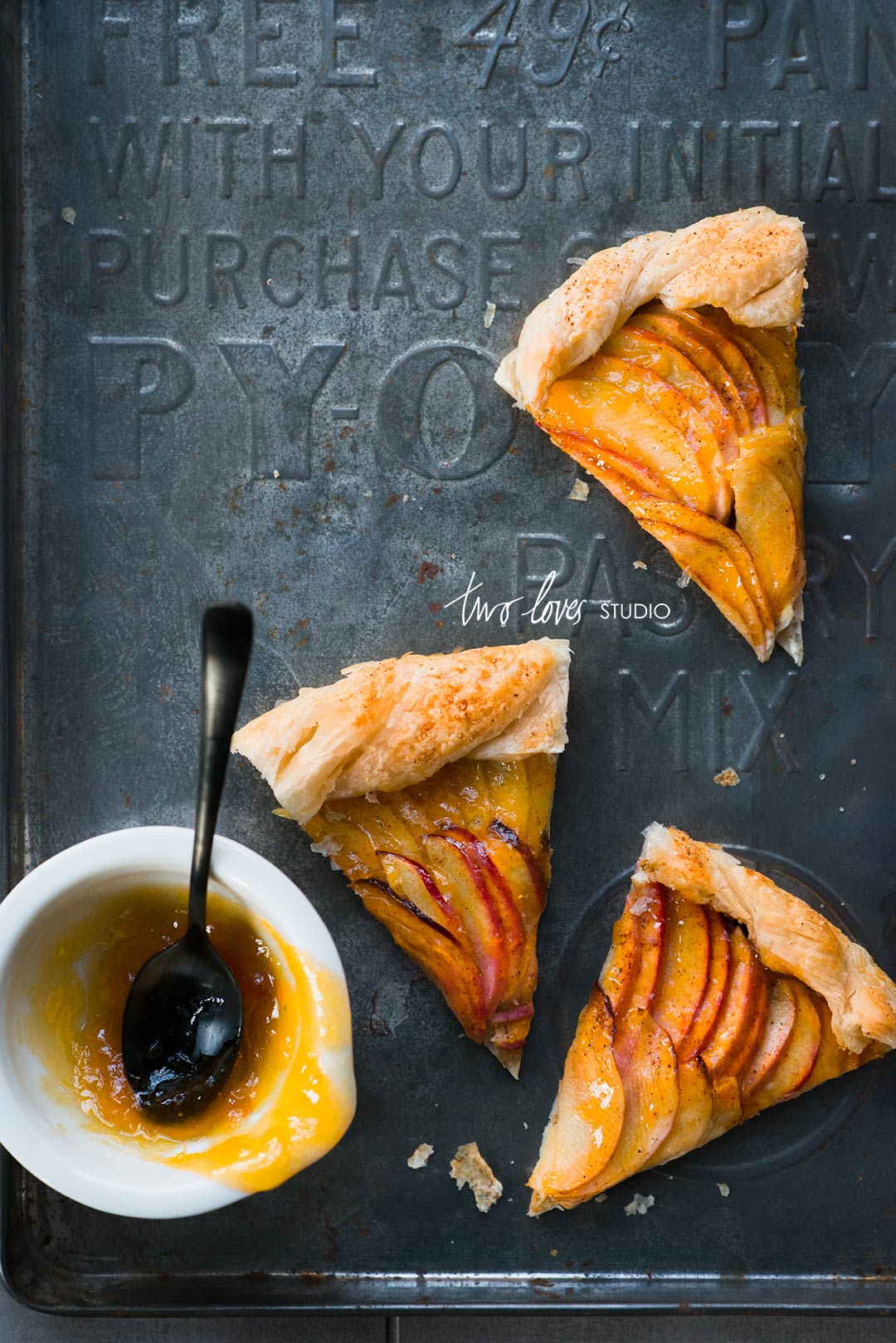
How To Use These Compositional Techniques In Your Food Photography
I hope that these three foolproof composition techniques have got you excited and thinking about how you will next use them in your images.
You know how we were talking at the beginning of this post about how it can be overwhelming to try and pick where you want to start with styling and which composition techniques to use?
Well the GREAT news here is that you don’t have to choose between them.
You can use all three! In fact, I encourage you to. That’s my challenge for you.



Jenn Bravo
Girl, you’re the best! I’m just embarking on my food photography journey (picked up my camera like 3 months ago) and you’ve become my no fail resource for sure. These tips are everything I’ve been teaching myself by studying great images, but couldn’t quite nail down a method to. So thank you. My latest work is linked here, it could definitely use some work and I think I need to remove a few images from the post, especially after reading this. Now I really see which images are the strongest and why. That “why” was the missing component and I’m excited to work now! But I can see my current images with layering and the triangles are the strongest. One question I’m curious about is putting in the human element. That’s part of my story telling technique, but what rules apply in that case? Are hands a layer? Thanks so much! Xx
Rachel
Jenn, you make me feel all warm and fuzzy! What a beautiful comment to read. **THE WHY** is the hardest, (yet most important part), of being able to consciously create. I love these images, I am a big soup/stew fan and anything with chicken is my jam. That’s a great question. I think that you could definitely make that a layer if that’s your style and you can confidently know that you have enough ‘other’ layers in your dish!
Chaimae
Okay, really, you’re amazing. I loved food photography before knowing your blog but really, sometimes I wonder what my journey would have been without Two Loves Studio. It’s like I see an image and I try hard to reproduce what I like in it and you come with a post about simples tricks that make all of this easier ! I can’t wait to see your new course about composition and I hope that it wouldn’t be too expensive (FP is taking control of my bank account :D)
Thanks, Rachel <3
Rachel
Chaimae! That you just sweet. I can say exactly the same. My journey wouldn’t be what it is without all of the beautiful creatives in our community out there! It’s for sure knowing which tools and techniques will get you the outcome you want. Knowing *WHY* something is interesting or visually pleasing is the key to that door! That’s what I will be sharing in composition essentials. I can’t wait!
Meera Seetharaman
Your tutorials and articles are packed with so much of valuable guidance and information Rachel. Thanks for being so awesome, always!
Rachel
Thanks for stopping by as always and your support! So pleased to hear you loved this post 🙂
dawnlovesfood
I don’t know exactly where I found you but I’m forever greatful I did. Your lessons are so impactful and my photos, composition and quality have already gone up a notch or two;)
Connie Eldrup
Yet another lovely and inspiring post from you.
I couldn´t help laughing when I read about the napkins in your mail. Do I know that!! Ha ha! They never seem to do what I want them to! Only today I was struggeling with a napkin for an orange photo shoot. No matter what I did, it just looked wrong.
Look forward to getting some tips! 😀
Best wishes from Denmark
Rachel
Don’t they just! So glad you can relate. You’ll love what I have coming up in a few weeks then ;P
Connie Eldrup
PS… Oops! Wrote my web address wrong..
Sonia
Great post once again, packed with precious tips! Thank you! Whenever I read your posts I’m both overwhelmed by the amount of things I realize I need to learn and excited to try and improve my photography ASAP! I so hope one day I too will be able to take beautiful, minimal and intersting photos like you do! I mean look at that cake square topped with a flour, or the coffee and cappuccino pic, so simple yet so beautiful!
Rachel
Sonia! There is a lot to know for sure, but think of it as a life journey. Every day, every year we get better and things become second nature. That’s why we have to enjoy the journey. I know you’re passionate and are really propelling yourself forward – you got this! And I have a couple of lessons and activities in the new course Composition Essentials to help you take powerful knockout minimalist images.
Cindy Feingold
Hi Rachel,
Great post about composition. I have now worked my way through your Lightroom magic course (some lessons 2-3 times) and I have learned so much. You are a natural born teacher! Looking forward to signing up for your composition masterclass.
I used several of the compositional elements in today’s blog post. Layering (newspaper, woven placemat), repetition (in using all circular bowls) and triangles (groupings of 3).
Thanks again for being a wonderful resource and inspiration! Looking forward to having you in Canada!!
http://www.saltandserenity.com/2018/01/banana-coconut-overnight-oats/
Rachel
Awesome Cindy! I LOVE the first image, so interesting. Well done. This was a fun post and I love that people are so interested in composition like me 🙂 Can’t wait to share more with you.
Adrienne
Great tips! Thank you.
Rachel
You’re welcome Adrienne – thanks for stopping by 🙂
Chelsea
Oh my GOSH. I’m bookmarking this so I can read it again and again. I love the way you explain things, girl! It’s so incredibly helpful. Now to go put it into practice!
Rachel
Woohoo! I am so pleased that it was helpful and in an understandable fashion. That’s my teacher training coming through! Always good to put our university degrees into practice 🙂
Claire
SO useful! Thank you! 🙂 I struggle with composition, and I think it’s why I am often left with the feeling looking at my photos like something is missing or not quite right that I cannot put my finger on. I struggle to get the layers quite right. Getting linen to fall or fold in a way that looks natural and right rather than fake and frustrating is a particular annoyance! But I also find it really difficult to figure out what to put in the shot and how much to add. So these tips are great. Is you composition class available? I’d love to find out more to perhaps save for it if it is! 🙂
Rachel
You’re so welcome Claire! It’s so freeing to know ‘why’ something looks good or doesn’t. Linens can be a challenge just like bad hair days. I have something in store for that 🙂 stay tunned. Composition Essentials is coming in Feb 2018 🙂
Carlos
Rachel, This is the perfect post for me right now. I’m after two years struggling to try to find my signature look or style. I keep switching from simple/clean to rustic/brown earth tones. Thank you for such a wonderful information and knowledge that you gift to this community.
Rachel
It can be hard to decide what our style is, especially at the surface level. You’re so welcome.
kalina
Rachel, I love your post 😉 You always sum up perfectly what I try to use intuitive … I have learnt a lot from You and I am happy that I found this place where I have all information in one place!
This is my exemplary work, repetition for gingerbread cookies! Reindeer-shape cookie cutter was my favourite so I produced a lot of raindeer cookies and … I had no idea how to arrange them on the photo! I decided to use simple repetition, this rule You describe in the latest post.
My work is here: http://www.ohhmybread.pl/2017/12/swiezo-upieczone-pierniczki.html
Rachel
Me too Kalina! Great to have your support and thanks so much for reading the blog. That is very true how you used those cookies. They are really cool.
Janice - Salads for Lunch
Thank you for this post! I’m new to food blogging and food photography so composition is one (of many) things I’ve been struggling with. Where do you get your beautiful napkins?
Rachel
You’re welcome Janice! Napkins and linens can be challenging. I would say search for ‘linen’ shops on Etsy and you can find some in homeware stores but I find the later to be harder to come by.
Sasha
Thank you for this post ! I started food photography two years ago but just recently decided to be more serious about it. Food styling is what I find more challenging ! I’m trying to apply the layering method but I sometimes struggle to find how to do it ! I thought I nailed it in the photo in the link ( ice + raspberries + water on the background) but you can hardly see the water… I’ll do better next time ! Thank you again for the inspiration 🙂
Rachel
Hey Sasha! How exciting! Great image. That will be due to the angle you were shooting. So have a play with that next time. Backlighting also helps, which you’ve used. So it’s a matter of finding that sweet spot to pick up that shine!
Melena
You sytle of teaching is so helpful and easy to follow. Thank you for all that you share!
Rachel
You’re so welcome! Thanks for reading. xx